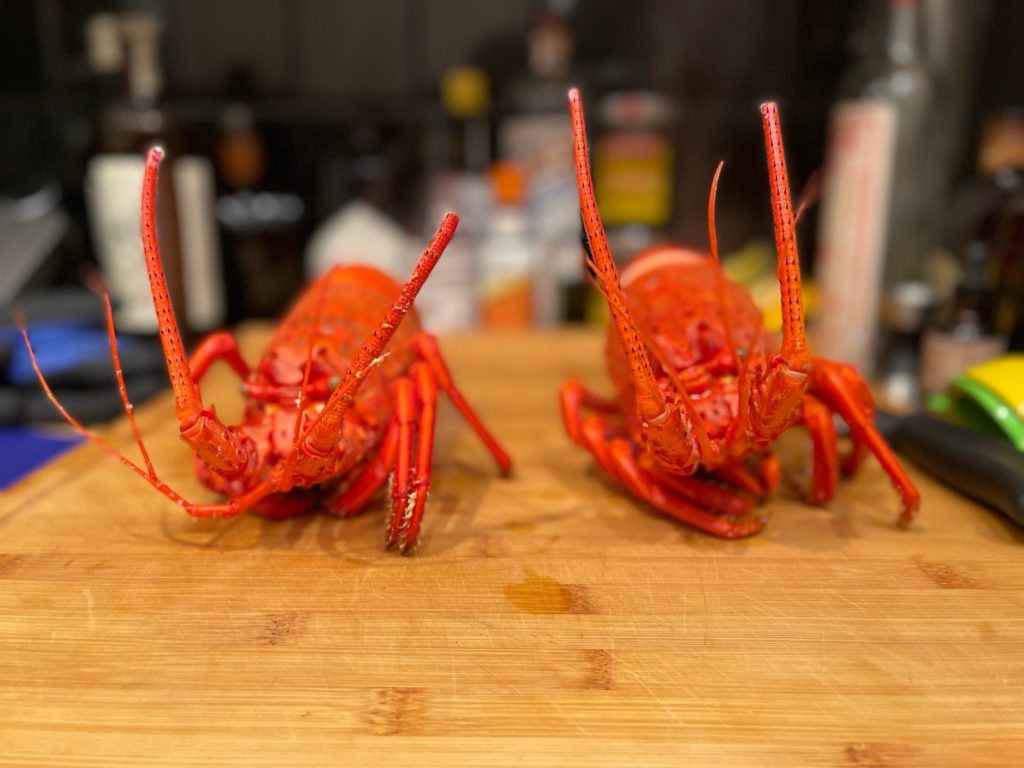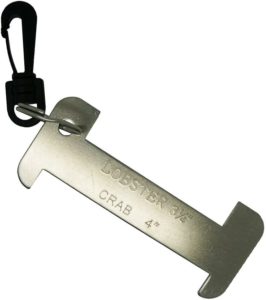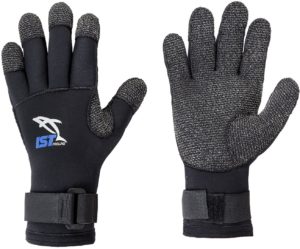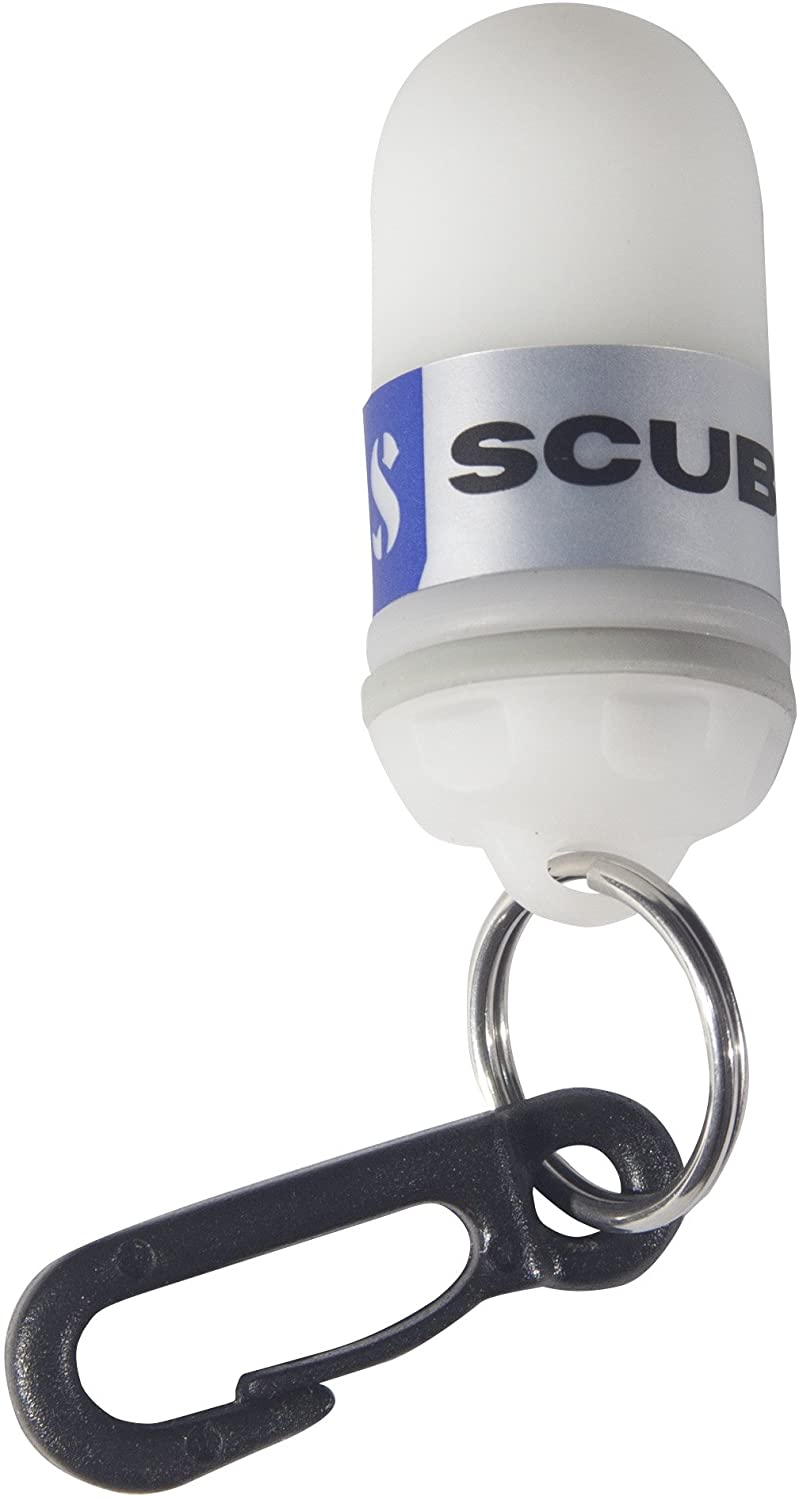What is Spiny Lobster?
California spiny lobsters (panulirus interruptus) are a common sight on south-facing reefs and rocks from Baja California north to Puget Sound, Washington. Unlike the Maine lobster, the California spiny lobster does not have claws. Instead, spiny lobsters rely on hiding out from their predators and use their antennae to generate a sound that scares predators away. These insects are omnivores that eat almost everything alive and dead. They love eating sea urchins which helps them maintain their populations. Spiny lobster hunting can be a fun and rewarding scuba diving activity!
Spiny lobsters are arguably more delicious than the more common Maine lobsters, however, they are very difficult to purchase at a fish market or restaurant. This is largely due to spiny lobster being a delicacy in China and most are shipped overseas. They are primarily targeted by commercial and recreational fishers. They can often be found hiding between crevices during the day but are mostly nocturnal creatures. The best way to eat spiny lobster is to hunt for them yourself!
This site is reader supported and all recommendations on this site are our own. We may earn an affiliate commission from the links on our pages which help pay for this site. … and the Mega Yacht
The Gear You Will Need
Lobster season is generally from early October through the middle of March (see below for link to specific dates as they change every year). You don’t need much for lobster hunting, just a few items including:
- fishing license with ocean enhancement and lobster card
- lobster gauge
- lobster bag
- kevlar gloves
- underwater flashlight and tank marker (optional for day but required for night diving)
The fishing license can be purchased at a local sporting goods store (i.e. Big 5) and the rest of the gear can be found at your local dive shop. Some rules apply to Lobster hunting in California: The bag limit is seven lobsters per person per day. Divers are only allowed to use their hands for catching lobsters (no spears or nets!!). Read more about lobster hunting rules from the California Department of Fishing and Wildlife.
Report Card
The first thing you need is your fishing license with ocean enhancement and your lobster report card. You can find it in a sports department like Walmart and Big 5. This card is important for the Fish and Wildlife Service to see how many lobsters were caught during the season. When you arrive on the shore or boat and end your hunt then you can count how many people caught then zero. Even if you do not catch any lobster, you still need to report this at the end of the season.
Lobster Gauge
This is important to ensure you are staying within the legal limits of lobster hunting. Measure the carapace from end to end, it must be 3 1/4 inches, no less! Remember, you are not allowed to bring lobsters out of the water that are not within legal size.
Lobster Bag
This bag is designed to be opened with one hand making it much easier to snatch some lobsters. They have power tails that use to kick away. I have used this bag several times and no lobsters have escaped from bag malfunctions!
Kevlar Gloves
No one wants holes in their gloves! Lobsters do not have large pincers but they do have small claws at the ends of the feet. They latch on and don’t let go. Kevlar gloves will save your hands and your regular dive gloves. I have used these gloves several times and they have been great.
Underwater Light
A good dive light is important for lobster hunting. You can use it during the day to look between rocks and small hotels. More importantly, you can use it at night as lobsters are nocturnal and roam around at nighttime. This light is powerful and suitable for daytime or nighttime. It’s easy to hold and has a cool rechargeable battery – the charger plugs directly into the battery! Now that’s pretty cool. I have few lights from this brand, but this one is the most powerful and my personal favorite.
Don’t forget a tank marker light so you can be easily located by your dive buddy. I like this light because the light flashes making the diver easier to spot.
California Spiny Lobster Hunting
How Do I Catch a Lobster?
Spiny lobsters can be found all over Northern and Southern California, particularly in San Diego, Catalina Island, San Clemente Island, and Monterey Bay. These crustaceans are easiest to catch at night as this is when they are freely roaming around. They can be found in shallow waters, but some people have better luck diving into deeper water (90-150 feet). It should be noted that diving this deep requires specialized equipment and a very experienced diver. Remember – never dive alone!
Make a Plan
During the day lobsters can be found in crevices and in rocky areas. Survey the area to make sure there are no other sea critters in the hole you wouldn’t want to snatch at (moray eels, horn sharks, sculpin fish, etc.) While lobsters cannot inflict harm with kevlar gloves on, other sea creatures may attack if they feel threatened. I have almost reached in holes with some of these creatures and I am glad I saw them at the last moment!
Once you have spotted your prey determine the best angle to attack. A lot of times you’ll find clusters of lobsters; take a second to find the largest and go for that one. Remember the mask magnifies objects underwater so lobsters will appear bigger than they are outside of the water. Avoid catching small lobsters as you can harm them and we want to keep these guys safe to preserve the species.
Pin the Body, Not the Antenna
The best way to catch a California spiny is to pin the body down and just go for it! Don’t grab the antennae because they pop off easily from their sockets. You won’t end up catching it and you will only leave it without antennae. You have to grab him at the carapace, pin him down, and hold steady. They have power tails and swim backward. Be prepared to lose some, the big ones are difficult to catch!
How to Cook Spiny Lobster
Never did I ever think that I would enjoy eating lobster more than crab, specifically king crab. Low and behold, I start lobster hunting, brought my first lobster home, and learned how to cook it. Let me tell you – I am hooked because spiny lobster is GOOD! If you can find them on the menu of a restaurant (it’s very difficult) the price runs about $100 for one tail. The good news is they are relatively easy to cook. Most of what is edible is the tail, there is not much else in the lobster except some organs. I personally have never tried the organs, I have heard it is an acquired taste. The tail meat is oh so good, tender, and buttery – melts perfectly in your mouth.
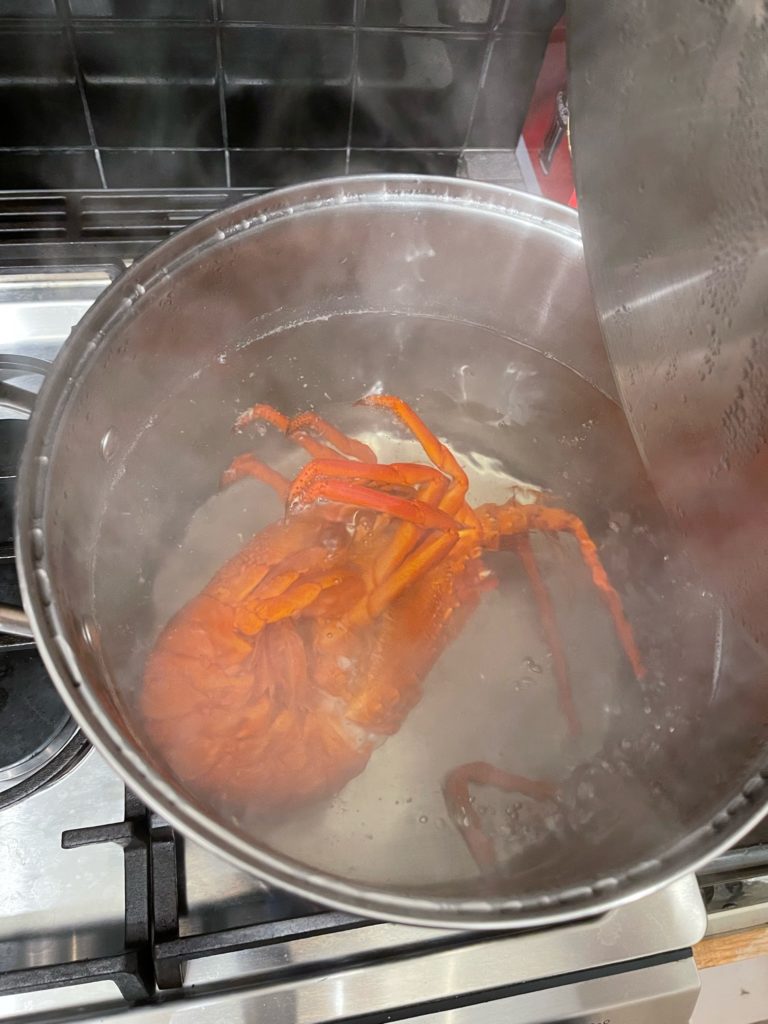
Tips for Cooking California Spiny Lobsters:
- Keep your lobsters alive until you are ready to cook them. It’s best to cook them fresh and you can freeze the tails. You can keep them alive for a day or two in a brown paper bag in the fridge if you cannot cook them the day of.
- I recommend removing the antennae before cooking them because they are quite long and don’t fit in the pot. You will need a sharp knife to cut them off.
- Butter, lots of butter! Ghee to be exact. A perfect dipping sauce of their delicacy is needed and nothing complements this delicious crustacean than super-powered butter.
- It probably goes without saying, but lemon is a must. All you need is a little (or a lot) of lemon and butter for a perfect lobster dinner. Maybe even a nice white wine (Dry Riesling or Muscadet) to pair with this decadent meal.
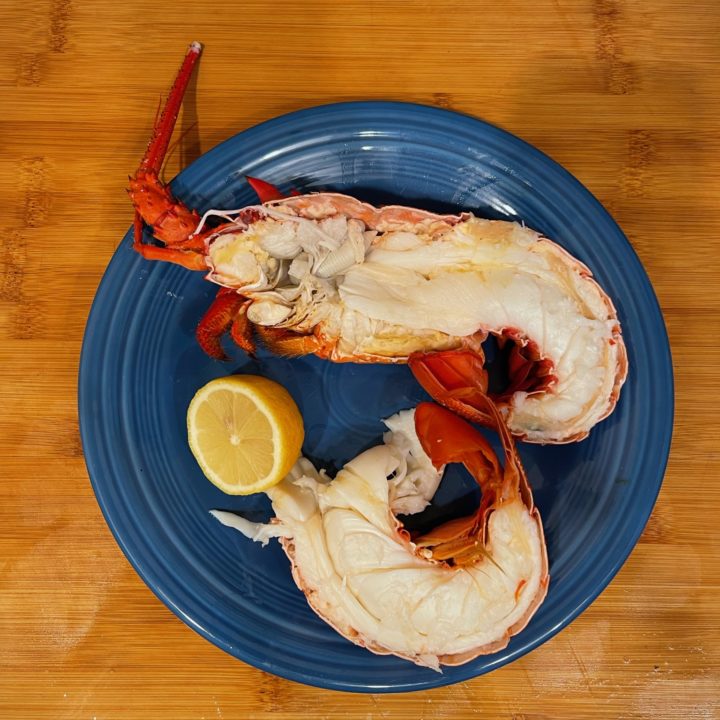
Spiny Lobster
Ingredients
- Spiny Lobster
- Lemon
- Ghee or Clarified Butter
Instructions
- Bring large pot of water to boil
- While waiting, Thoroughly rinse live lobster and remove remove antennae
- Boil uncovered for 10 minutes placing head first into water
- Remove and slice in half lengthwise
- Serve with warmed butter and slices of lemon
Have you ever gone lobster hunting? I would love to hear about your experience in the comments below!
